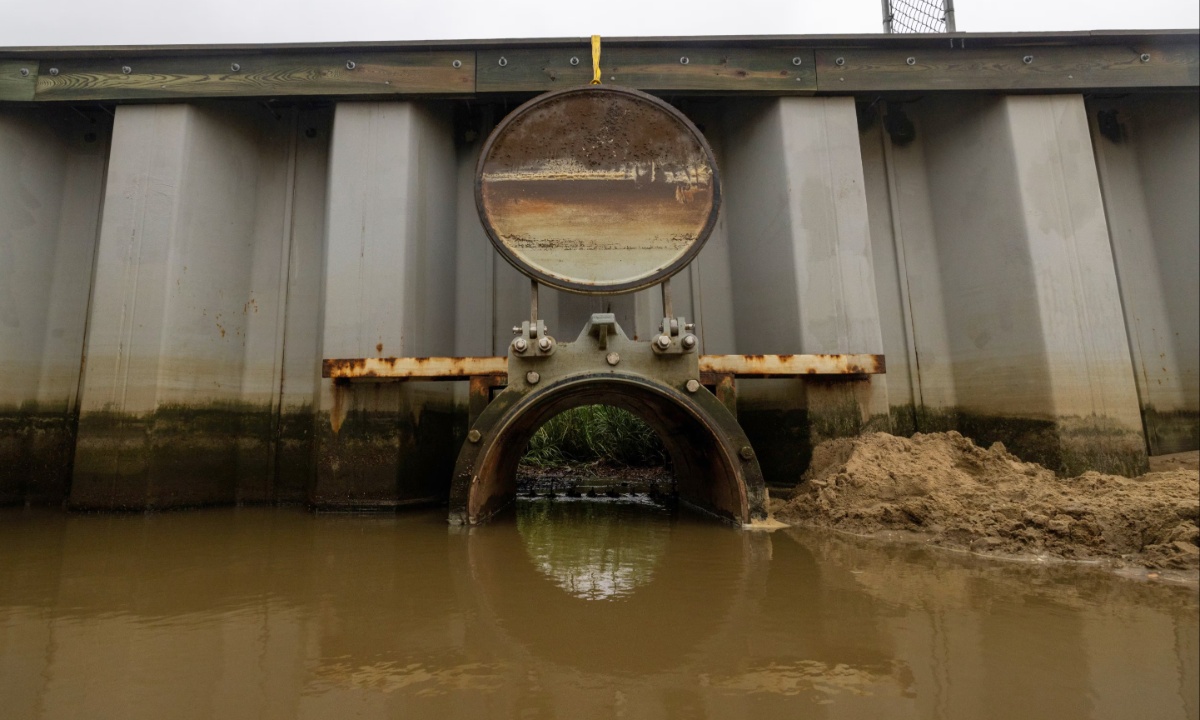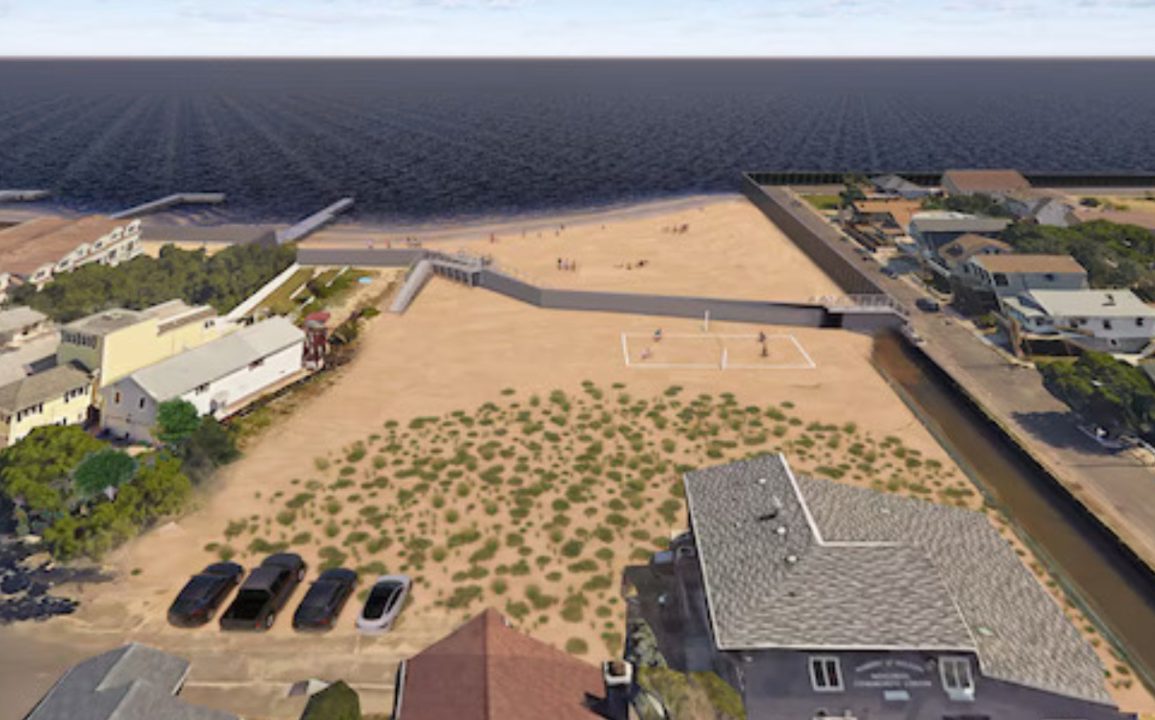Highlands, a coastal town overlooking Sandy Hook Bay, is grappling with the threat of rising sea levels exacerbated by climate change. Projections from the National Oceanic and Atmospheric Administration predict that by 2100, parts of the town could experience ocean level rises of 2.5 to 3.5 feet, putting significant portions of the community at risk.
Flooding is already a common concern, with storm surges from hurricanes and periodic weather events often causing severe damage to the area. According to Mayor Carolyn Broullon, more than half of the town’s properties, including businesses, are within the flood zone, intensifying the urgency for solutions.
In response to the flooding threat, local and federal officials have been exploring potential solutions for over three decades. One prominent proposal is to construct a $148 million floodwall designed to protect the town from rising waters.
The wall, planned to be about 14 feet high and stretch over a mile along the town’s waterfront, would be funded partially by federal funds from the Bipartisan Infrastructure Law. However, the proposal has faced significant opposition from local residents, as evidenced by a recent non-binding ballot question where 77% of voters rejected the floodwall project.

Despite the strong opposition, Mayor Broullon has stated that the town will respect the vote while continuing to work with state and federal agencies to address flooding concerns. The opposition stems from multiple factors, including the financial burden the project would place on residents.
Taxpayers would not only face an initial $13 million construction cost but would also be responsible for annual maintenance fees of $452,000. Additionally, there are concerns about the use of eminent domain to seize land from nearly 150 properties along the waterfront.
The debate over the floodwall is indicative of the broader issues facing Highlands, as residents question whether the barrier would provide lasting protection. Some, like Mary Conklin, argue that the floodwall might not solve all the town’s flooding problems and that other measures, such as addressing stormwater management, need to be considered.
Conklin, who lives on a frequently flooded street, expressed her frustration with the idea of a floodwall, which she believes could create more problems, including potential issues with beach access and views.
In addition to the floodwall proposal, local officials have explored other solutions to mitigate flooding. One such initiative is a $16 million project funded in part by a FEMA grant, which aims to combine flood mitigation with green infrastructure.
This project focuses on improving stormwater management, including upgrades to storm drains and the installation of new pumps and storm pipes. While the project is still in the planning stage, it represents an alternative approach to addressing flooding without resorting to a large, costly flood barrier.
Ultimately, Highlands is facing the larger, global challenge of sea level rise, which affects coastal communities worldwide. As climate change accelerates, the town’s leaders acknowledge that no single solution will be able to completely solve the problem.
Mayor Broullon is realistic about the long-term challenges ahead, noting that while some solutions, like the FEMA-funded project, may help mitigate flooding in the short term, the broader issue of rising seas is a persistent problem with no clear fix in sight. The future of Highlands will likely require ongoing adaptation and innovation as it confronts these environmental threats.

